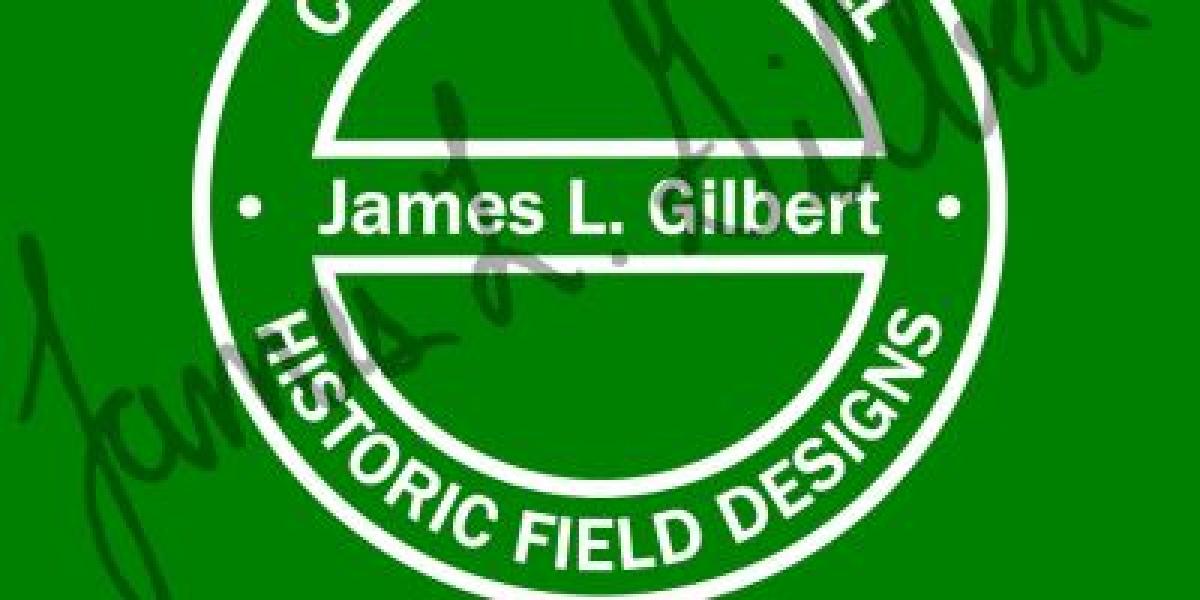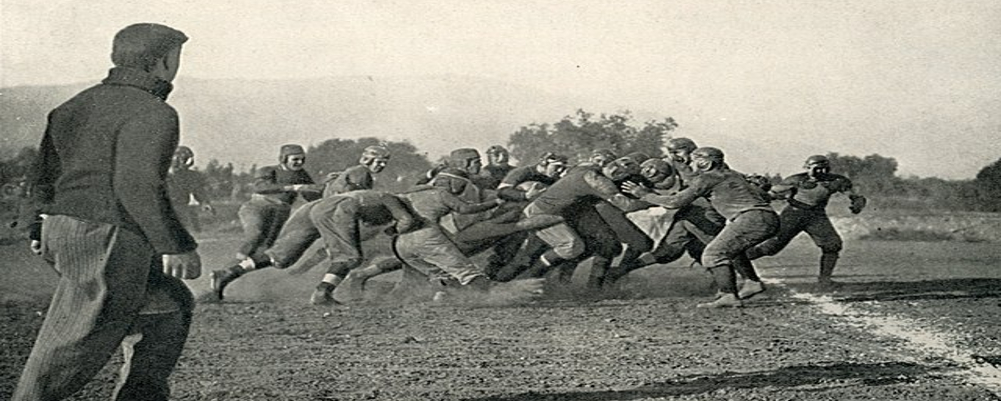Our guest, Timothy Brown of Football Archaeology, has admired and brought to our attention the work of a historian who has really captured the evolution of the American Football Field.
James Gilbert has put together an impressive research study on the evolution of the American football field over the years of rules revisions and modifications since 1876, complete with graphics. Enjoy this Substack post that he put out recently.
Transcribed Conversation on Football Field Evolution with Timothy Brown and James Gilbert
Hello, my football friends. This is Darren Hayes of PigskinDispatch.com. Welcome once again to The Pig Pen, your portal to positive football history. And wow, we have a great episode coming on tonight.
We have Timothy P. Brown of Football Archaeology joining us, and we're going to be talking about the football field and some evolutionary changes that have happened to it over the years. Tim, welcome back to The Pig Pen. Darren, good to see you again, as always.
Thanks for having me. Never want to take it for granted that you're going to let me come onto your show. The invitation is always there, my friend, and I'm never going to take it for granted that you join us each week because it's quite a treat for myself and the listeners.
We get to learn about something new with football or be reminded of something maybe that's been long forgotten. And I think that's kind of typical of what we have tonight. You know, something that we see every single game that we watch, and it's so obvious that we probably take it for granted.
That's the football field itself. You know, without it, there's not much of a game going on. And you came across a friend of yours that you guys wrote a piece together a few years ago on the evolution of the football field, and it's really quite interesting.
And maybe you could talk about that a little bit tonight. Yeah, so this is, you know, the friend that you're mentioning is James Gilbert. And, you know, kind of longtime readers or somebody who's gone back through the archives might remember that back in November 2021, he and I co-authored a story about the University of North Carolina team from 1893.
They were the first Southern team to go to the North and play a game because they played Lehigh towards the end of the season in Manhattan. So, you know, he and I kind of worked together on that. And I forget, even now, how he and I first connected.
But, you know, he's in the kind of old football and just general sports, you know, arcane information, you know, like me. And I had, you know, like in my How Football Became Football, I documented at least the major sequences of how the field and markings changed. You know, goalpost locations, all that kind of stuff.
So, I mean, I took it to a certain level. And, but now, James recently launched a Substack newsletter or blog called James's Newsletter. And one of his first articles is an article about the evolution of college football field.
So basically, he's what he did, and he's been doing this for quite some time. He's been creating, you know, graphics, images of the football field and all the markings at each point in time. So, going back to 1876.
And then, you know, each time that it changed, either the dimensions or the markings, location, this or that on the field, he basically created all these graphics to show this information. And then what he's done now is mirror it in a Substack article. So he's got kind of the description of what was happening, you know, why it changed what was happening, the game led to the change, and then just the detailed description of the change.
And, like, when I did mine, I stopped at 1960, but he carried on to really to the present. So all the different changes that, you know, we sometimes don't think about the things like the size of the coach's box, the size of the team, team's box, how far off the sideline to get back, you know, they get back coach has to get back, you know, all that kind of stuff. You know, he just he's outlined, outlined, he put in detail all this information.
So this is one of these where, you know, normally we talk about my tidbits or an article, but this, I just wanted to make sure there's some attention brought to him and the effort he's gone through. Because it's just, you know, it's a great resource. And I don't know anybody who has documented how the field has, has changed over, you know, 147 years of football history, like he has, you know, so it's just a really neat effort.
He's done a couple of other things as well. Yeah, that's. I know exactly what you're talking about. I did a piece similar to you, where I covered the football field probably two or three years ago. Actually, it was an adaptation of an article I wrote back in 2003.
And I had my son, you know, throw some graphics up there. And but James's article, you know, I had the grid field in the early 1900s, but I had it going, you know, goal line to goal line, which it did. But I had forgotten about the aspect of the back in, and I believe it was 1903.
And we were just talking about it. I ran across an article the other day in newspapers.com, where they went from a 25-yard line to a 25-yard line with the grid. And then it was the normal stripes, you know, outside the 25s or to the goal line. Anyway, so just the detail, he's doing that.
And I can tell you from officiating, you know, the 27 years I officiated at the high school level, there was a field change every single year, you know, as you said, the coaches box changing by the yard or, you know, the teams were allowed to the 20s. And it was a 25s or boundary lines or a hash mark is now, you know, instead of three inches, it's four inches wide or whatever, you know, so I can imagine what the collegiate field has been doing over those years. It's probably every year; there's something small.
So, this is really a Galathian chore that James is doing, and it's much appreciated. We'll have a link here in the show notes, folks, to James's site and Pigskin dispatch.
So you can appreciate his work. You know, that's really going to take a lot of effort on his part. And that's appreciated.
Yeah, you know, the thing about it is like there's so, you know, there's a bunch of times when, um, yeah, there's, well, you and I go on a particular site that sometimes they post a pic, you know, these unidentified, you know, people can't figure out where's this, you know, who's this team in this picture? You know, there's a game in a stadium. Where is this? Who's playing? What's the period? So, a lot of times, you can tell certain things just based on the uniforms or the formations, and you have a pretty good sense of what's going on. But there are other times where, you know, if depending on the angle of the shot, you can see the field markings, and that tells you a tremendous amount.
In some cases, like 1903, it tells you exactly what year the game was played. You know, if you have the right kind of angle or the right kind of shot. So, so anyway, so just anybody who enjoys doing that kind of thing, or sometimes finds themselves looking back at an old photo and trying to figure out, well, when, when was this thing from, you know, his site will be really a great reference, you know because it just collects all that kind of information in one place.
You know, the other, the other thing that, another thing that he does that is interesting is, and he, some of his posts on it, on the, on his newsletter reflect this, where he's a, he's a North Carolina, you know, UNC graduate and fan. One of the things he's done is go back and try to figure out where every North Carolina football game was played. And I don't mean that at a very casual level; I mean out of detail.
And so, you know, like, you can go back, and there are all kinds of sites where there's a site called jhowell.net that I use all the time to find the old scores and where games were played and that kind of stuff. And so it might say the game was played in Milwaukee or New Haven or wherever it was, but it doesn't necessarily tell you the exit or the field. Well, a lot of the old football, you know, especially going further back, you know, in the 1800s, you know, maybe up till 1920, sometimes these games were just played in some local park, you know, and they slapped up temporary stands or the games were played in a minor league baseball park that got torn down 80 years ago.
And now there's, you know, an expressway is sitting on top of it or, you know, a shopping mall or whatever it is. There are all kinds of these past stadiums that just are no longer there. And in a bunch of cases, kind of people have lost track of where they are.
So he goes in, and I don't really understand all the resources that he uses, but I know he uses like these old, there's a bunch of online through like Library of Congress, there's these online insurance maps that used to document, you know, the streets and major cities and all that kind of stuff and which buildings were where. And so I think he uses those kinds of things and all kinds of stuff from, you know, the newspapers telling you, well, it's at the intersection of 42nd and Western or wherever. And so then he finds where this game or where this field was and then plots the field atop, you know, what it looks like today, like in Google Maps.
So it's just really kind of fun. And then he's created some databases that, you know, dig into other information. You know, it's very UNC-specific.
So, I don't necessarily care about UNC, but I really appreciate his digging into it. It's just, you know, just getting the details of a particular topic. But just think about all the fields that it covers, you know, everybody that UNC traveled to play over the years, where their stadium is, you know, you're going to know where Duke played their games when they were, you know, Trinity College or whatever, you know, at the time. So that's some really interesting stuff.
I'll have to add that to my bookmarks and check that out because, you know, you have like the uniform sites, you know, the gridiron uniform database, and you have the helmets, you know, sites that you can go to and see where helmets are from here. Now that having a resource to look at fields of an era and where football stadiums were, you know, that's pretty cool too. So that's why I'm sure a lot of people will be interested in having that information too.
So good job, James. Yeah, no, it's just kind of fun stuff. And, you know, just the, you know, again, as I said, I don't know the method that he uses to get there, but, unfortunately, he couldn't join us tonight.
Otherwise, you know, he wouldn't would have done so. But so anyway, it's just interesting stuff. And, you know, if you're enough of a geek, like you and I are, you know, you can really, you just, you know, it's like you see somebody who's got an interest in this sport or this aspect of the sport, and they dig into it, or they collect, you know, certain things.
It's just one of those things. There's nothing I had thought of, but I just have a really deep devotion to the particular aspect of the game. Yeah. Well, let's use a little bit of James's information.
Okay. Now, you just recently saw this and appreciated it. What's something that jumped out at you that either you didn't realize, or maybe you forgot, and it brought a different light on what James did in his fieldwork?
Yeah. You know, I think the, I don't know that for me it's, it's any one thing. I know he just did it, just did an article.
I think maybe it was today or the other day where, you know, he's pointing out that North Carolina is going to play a game in Charlotte. You know, I think they're playing at the Panther stadium. And so he's, the articles about, Hey, they played, you know, it's the eighth most frequent city that they played, you know, but for them, it's kind of like, you know, they played, they played at a lot of intermediate cities, you know? So, I mean, teams used to do that all the time.
I've got an article that's my Saturday tidbit is about this, where, you know, teams traveling, you know, we've got this big thing about the West coast athletes are going to be traveling to get to the Big 10 schools and all that kind of stuff, you know, with the conference modifications. But back in the day, when people traveled by train, they spent a lot of time on the train, too. And so a lot of times, they find these cities halfway between one another, and both teams would meet there and be a bigger city, especially if they were kind of rural schools.
So they played in all kinds of locations, you know? And so, but in North Carolina in particular, it just seems like they played a lot. They played in a lot of places, you know, a lot of different intermediate towns. And maybe it's just the geography of, you know, where they were in the transportation network at the time. But yeah, it's just kind of interesting, all the different places that they played.
Oh, very cool. All right. Well, why don't you go ahead and if you have James's information, if you want to call it out now, so people can do it.
But again, you know, if you're driving or something, you can go to the show notes and get the link there. But Tim, go ahead and let us know where we can find James. Yeah.
As I said, he's on Substack, which is just a platform. You can find him at jameslegilbert.substack.com. And I checked beforehand, just Googled James Lee Gilbert Substack. And, you know, it's one of the first things that comes up.
Then you'll have the link, you know, the actual link in the show notes. But James Lee Gilbert, Substack, should get you there. All right.
And folks, the graphics are really splendid. You're going to be really pleased, I think, when you see these graphics, especially of the football field evolution that we started talking about. I got to go and check out all these coordinates of where the fields were. I have to go. I appreciate that here when we get done.
So I can't wait to do that. You just added another thing to my to-do list tonight. So, thanks, James.
So far, he doesn't have a lot of those on this site. But you know, he's done a bunch of them in the past. So, I hope you know that he recycles them and republishes them on Substack.
Well, Tim, wow, that is great stuff. Thanks for bringing this to our attention so we can appreciate his work and your work.
Why don't you tell us how folks can get your daily news? Yep, just go to footballarchaeology.com, and you can subscribe. You'll get an email every night at seven o'clock Eastern with today's article. Otherwise, you can follow me on Twitter, Threads, or the Substack app. All right, Timothy P. Brown, footballarchaeology.com. We thank you once again for joining us, and we will talk to you again next week.
Very good. Thanks.
Frequently Asked Questions About an American Football Field:
✦ How long is a football field? A football field from goal line to goal line is 100 yards long with two ten yard deep end zones. Want to know more about the evolution of the playing field, you are in the right place as we covered it here:Field Size Evolution.
✦ How wide is a football field? Most levels of American football play on a field that is 53.3 yards wide.
✦ What are the hash marks for? The hash marks are used for a few different things during a game, but most importantly they are the inbounds spot for the ball to rest fo the next play adjacent to where it became dead on the previous play outside of the hash marks or out of bounds. Here is a great piece explaining the has marks and their history and evolution: The Fumble Fiasco Out-of-Bounds Oddities in Early Football.




